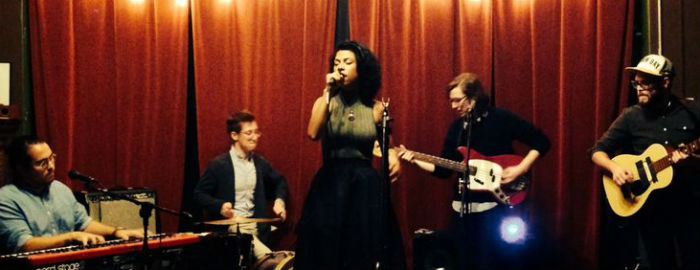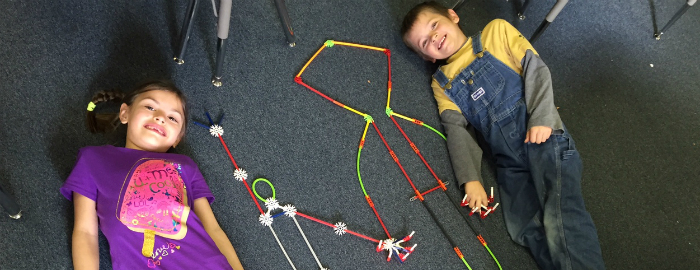by: Beth Carreño
Reina Del Cid Coming to The Etude Sessions on March 18th
The Étude Sessions are excited to bring the rich sounds of Reina Del Cid and company (Toni Lundgren, Andrew Foreman and Zac Schmidt) to Paradigm Coffee and Music on Friday, March 18th at 7:30 p.m. Hailed for her complex songwriting and undeniable musical talent, Reina Del Cid has gained attention and praise for the latest release, The Cooling.
Beth Carreno sat down with Kate Krause, owner of Paradigm Coffee and Music. Kate has booked the musicians for The Étude Sessions during its three seasons. We talked about Friday’s show and then some…
What can we expect from Reina Del Cid and Friday’s show?
Kate admits that she rarely books shows if she hasn’t seen the performer before. However, she was excited with what she has heard through the music community about Reina and her band. Reina first got on Kate’s radar when she received honorable mention on NPR’s Tiny Desk Concert Contest.
Reina is as much a storyteller as a songstress and has a wide range in her performances. Her bandmates are extremely talented, and it is obvious from the Sunday Mornings with Reina that they have great rapport. The guitar sounds alone are reason to attend this show!
Reina Del Cid has quite a following, thanks in part to her YouTube videos of performances (again, check out her Sunday Mornings with Reina videos). People buying tickets are “pumped” that this show is making it to Sheboygan. Kate warns to get your tickets early.
What’s the remarkable thing about the venue, Paradigm Coffee and Music?
June will mark the tenth anniversary for Paradigm. Kate is proud of how far the venue has come in that time. It’s not a typical coffee-shop venue. Kate has spent the ten years honing the venue into a true listening room (with a 16-channel sound board ready to go). Musicians like playing in an atmosphere like Paradigm, and because of that, some great performers have come through the doors!
Kate is quick to point out that Paradigm has become more than just a coffee shop. It’s taken on a life of its own and is now bigger than she imagined. It’s a part of the community. One of the reasons she shares her stage with The Étude Sessions and “Good Music + Good Cause” is because Paradigm is a community-minded business. It also happens to be where you can get an awesome cup of coffee and gluten-free treats.
What’s next?
Gospel Machine will be here on Friday, April 15th. Kate is pumped! She described Gospel Machine as a soulful garage band with some groove; not quite Paradigm’s typical folk band. (Although, she immediately added that she loves folk bands, and Paradigm is often a folk venue.) If you’ve stopped by Paradigm recently, Gospel Machine is in the constant rotation of music being played. Gospel Machine has become a part of the soundtrack of life at Paradigm. That’s a recommendation.
How can people get tickets to the shows?
Kate could not emphasize enough the importance of buying tickets in advance. It ensures people get tickets to the show and helps with the planning. The best place is through Brown Paper Tickets. It’s easy and on-line. Order securely at http://www.brownpapertickets.com/profile/1208899. Tickets are $15 for each of the shows with a small, service charge at Brown Paper Ticket. Of course, individuals can purchase ahead of time at Paradigm. Tickets can sometimes be purchased at the door if the show hasn’t sold out. But, what did Kate say? Please purchase tickets in advance!
Thanks to Kate Krause for hosting The Étude Sessions and talking about the music scene at Paradigm Coffee and Music. She has created a community of musicians and music lovers – and don’t forget the great coffee!
Want to know more about Good Music + Good Cause, and how The Étude Sessions builds community? Check out this blog
Étude Sessions Season Three Photo Galleries
A look back at The Étude Sessions Season Three so far.
ESAA First Grade Exhibitions of Learning
As a supporter of our schools, I was invited to a first grade Exhibition of Learning (EOL). I wasn’t sure what to expect. I’ve attended EOLs for our high school students. They are amazing. But, I’ve also spent lots of time with first graders. I wasn’t sure how what I understood about EOLs would be translated by first graders.
by: Ted Hamm
Presentations of Learning: Trimester 2
Each trimester we take a day and a half have our students reflect on their learning. I feel it is important to share a few thoughts about this. I wrote in depth about this last trimester in a blog[directors-blog/presentations-of-learning-thoughts-as-a-parent-and-advisor/] sharing my perspective as an advisor at IDEAS and a parent at ESAA.
by: Ted Hamm
Implementing the College Work Readiness Assessment at IDEAS
Dear Parents, Students, Staff, and Friends:
by: Susan Griffiths
Charter Contract Renewal: ESAA School Goals
Dear Parents, Staff, and Friends:
by: Ted Hamm
Charter Contract Renewal: The Mosaic School's Goals
Dear Parents, Students, Staff, and Friends:
by: Ted Hamm
Charter Contract Renewal: IDEAS Academy Goals
Dear Parents, Students, Staff, and Friends,
by: Ted Hamm
Charter Contract Renewal Update
Dear Parents, Students, Staff, and Friends:
by: Lori Ladiges
ESAA Literacy Connections: What is family literacy?
Dear Parents,





